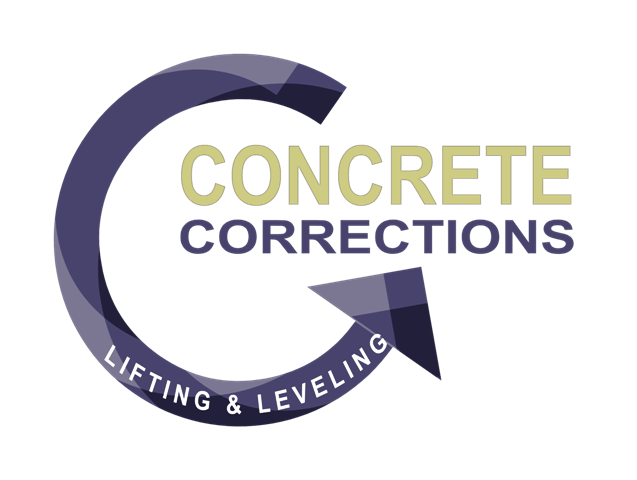The Seven Deadly Gutter SinsBad rain gutters are the number one mechanical contributor to the deterioration of your home. Over years of experience, we have seen the main contributing factors are one or more of the following: 1) poor design, 2) defective installation, and 3) nearly all are so poorly maintained that they have suffered damage or premature deterioration. Because gutter maintenance can be difficult and time consuming for home owners, it is a commonly procrastinated chore. Many gutters are difficult or near impossible to access and require putting yourself at risk. According to the World Health Organization, around 164,000 American’s end up in hospitals for ladder-related injuries each year. Proper gutter maintenance for homes with trees usually requires three to four cleanings a year (although for dry years, two cleanings should be enough). A more difficult to understand fact has to do with defective gutter installations. Missing flashing, leaking seams, standing water, and improperly placed or missing downspouts are the most frequent issues. We routinely discover improperly sized gutters, bad down spout placement, sloppy sheet metal work, and defective support mechanisms. The long term integrity of a home’s structure is dependant on the effectiveness of its gutter system, but many builders and designers tend to overlook their importance. Unsure if your gutters have been installed correctly, or are in good shape? Check out our list of Gutter Sins below: 1. Clogged GuttersClogged gutters cause water to stand and stagnate at the bottom of the gutter and often overflow. Consequences: erosion, mosquitoes, rust through, roof damage, foundation damage, siding damage, and damage to the gutter and roof support system from excess weight. 2. No Drains or Splash BlocksWhen water leaves the downspouts it needs to be directed away from the structure. Newer homes usually have underground drainpipes connected to the downspouts while older homes carry the water safely away by means of “splash blocks” installed at the downspout’s. Without either of these, water will find its way into and under the foundation. Consequences: standing water in the crawl area, mold, mildew, foundation settlement, erosion and dry rot. 3. No Flashing At EavesLack of flashing between the back of the gutters and the wooden support structure of the roof is a very common problem. Without flashing, bare wood is exposed to the water and debris passing through the gutters. Consequences: Dry rot, termites, roof rot and insect infestations. 4. Defective PitchDefective gutter pitch prevents water from flowing to the downspouts. This slows the water’s evacuation and can create areas of standing water. Consequences: erosion, mosquitoes, rust through, roof damage, foundation damage, siding damage and damage to the gutter support system and roof from excess weight. 5. Poor Downspout PlacementImproper location of downspouts, or not having enough of them, can lead to standing water and overflows during heavy rains. Consequences: erosion, mosquitoes, rust through, roof damage, foundation damage, siding damage and damage to the gutter support system and roof from excess weight. 6. Overgrown GuttersAllowing shrubs and trees to overgrow the gutters can cause considerable problems. We have seen first hand examples of Wisteria plants that have completely removed the gutters from the structure and filled both gutter and downspouts with vines to the point they are no longer functioning. Consequences: gutter, roof and structural damage, foundation damage, siding damage, window and door damage, termites, ants. 7. Loose, Damaged or Non-existent GuttersThese problems allow water to flow off the roof uncontrolled. When this occurs, water will find its way into the siding, trim, windows, doors, foundation and other areas where it is not wanted. Consequences: erosion, dry rot, foundation damage, landscape damage, siding damage, window and door damage, crawlspace moisture, mold and possibly structural damage.
Having "healthy" gutters will help keep your home's foundation strong, keep erosion and voids to a minimum and overall deterioration a little more manageable. We see concrete settlement and soil movement around homes or businesses that can be repaired instantly. Call Today for your Free Estimate 770-558-5862
4 Comments
Construction Practices & Soil Conditions That Lead to Settling Slab FoundationsSettlement of concrete floor slabs can be a major problem and can cause serious damages to a home or building. Some of the most common causes for slab settlement include drying and shrinking of soil under a slab, poorly compacted fill soils, and washout of soil. Each of these conditions create a void under the concrete slab. If the concrete is not strong enough to span the void, the slab will crack, break, and settle into the void. The following paragraphs offer some additional information for some of the more common reasons for slab settlement: Drying and Shrinking of Soil Under the SlabConcrete floor slab settlement is often the result of changes in moisture content or density of the supporting soils. Soils beneath a concrete slab foundation can dry and shrink over time due to extended drought-like conditions. When this happens a void is created under the slab, causing the slab to sink and crack. Along with a settling slab, interior partition walls may settle and cracking in drywall can occur. Poorly Compacted Fill SoilsDuring construction of a home or building, layers of soil are commonly moved around or spread out to bring grade to the desired level. When the structure is built, footings may be deep enough to extend below the fill soils, but the slab may remain on the fill. Over time, loosely compacted fill soils will consolidate beneath the weight of the slab or fill layers above, causing a void to form below the slab. When this happens, the slab will begin to crack and break as it settles into the void. Soil Washout - Plumbing LeaksA common building practice is to install plumbing lines below concrete slabs. In some conditions, plumbing lines under a slab can leak, causing erosion and soil is pushed away from under the concrete slab. This displaced soil creates a void beneath the slab, causing the slab to crack and settle. We are available to help with stabilizing soils and filling those voided areas. If you think you might be experiencing any of these issues, please contact us right away for a free inspection and foundation repair quote.
Call Today 770-558-5862 or email [email protected]  It's hard not to smile and laugh when thinking about growing up with the county fair, the local amusement parks and of course, who could forget. . . the scrambler! We had a fun project a few weeks ago, when we got a call from Mr. Williams in Fayetteville, GA. He initially said they had a slab that had settled, it was out in the open. When it rains, they have to use sump pumps and leaf blowers to get the puddled water out of the way. Who knew it was at Fun Junction USA (formerly Dixieland Fun Park)! The slab, that the scrambler sits on, had settled and was holding water when it rains. We see this problem often. After time, the soil under a slab may settle and not provide the good base, as initially planned. Sometimes erosion has a part to play, but in this case, with fairly flat ground, this problem most likely happened from constant vibrations, from the ride, and settlement over time. After every storm, the crew would remove this cover and put a pump in the area to drain water out. Our goal was to give full lift and support to the settled slab area, where the base of the ride sits, with polyurethane foam. We wanted to give enough lift at the middle to encourage water away from pooling at the center. After lift was completed, we then void filled and supported around the perimeter, with polyurethane foam. While the work was being done, we were sure to have our transit handy to make sure we had enough fall on the slab. And, of course, when we were done . . . We had to take a ride! What a cool project we were able to be a part of! This was another successful job for Concrete Corrections.
For great family entertainment, stop by this summer and visit these hard working folks in Fayetteville, GA To all of our Friends, Family and Co workers: Not drinking enough water before a morning run, sweating a ton at the gym, forgetting a water bottle to sip during outside work, and steamy temps are surefire ways to put us on a path to dehydration doom. Staying hydrated while exercising and working is important because of the added sweat loss (compared to day-to-day activities like working at a desk or watching TV). Tossing back some H2O while being out in the summer heat can also help us fight fatigue and prolong endurance. Check out these 10 ways to prevent mid-work dehydration. 1. Drink! Good old H2O is critical for rehydrating when the body experiences fluid loss, such as when we sweat. Even though we are inundated with everyday commercials and fancy iced coffees, most of the time, water will do the trick just fine. Shoot to sip seven to 10 ounces of fluid every 10 to 20 minutes during exercise or outside work to stay properly hydrated. If you’re working out for longer than an hour or doing a particularly intense exercise (like running a marathon or participating in a tough training session), you will probably need to replace electrolytes too—this is where a sports drink or electrolyte-enhanced water comes in handy. However it’s also important to be wary of overhydration: Too much water can lead to hyponatremia, which is when excess water in our bodies dilutes the sodium content of our blood. "It is most often caused by long duration exercise and either drinking fluid at a rate that is more than fluid losses or only replacing fluid losses withhypotonic fluids like water," CamelBak hydration advisor, Doug Casa, says. 2. Sip on sports drinks and coconut water. When we sweat, we lose electrolytes, which are minerals found in the blood that help to regulate (among other things) the amount of water in the body. Research suggests and sports drinks, such as Powerade and Gatorade, can help prolong exercise and rehydrate our bodies because they contain electrolytes, which plain old water does not. While an ordinary workout may not require electrolyte-replenishing, those participating in longer and more intense periods of exertion, such as running a marathon or going through a particularly intense workout, will benefit from a good dose of electrolytes mid-workout. Not in to sports drinks, or want a more natural alternative? Water-enhancing electrolyte tablets, coconut water, or a homemade sports drink could be potentially effective substitutes.
5. Check the toilet. If you’re taking a mid-set break to hit the loo, check on the color of your urine to make sure you’re staying hydrated. When properly hydrated, urine should be pale yellow in color. Though it may be tricky to keep an eye on it, try to watch the urine stream, since the color of urine will dilute when it hits the toilet water. Dark yellow urine may indicate dehydration. 6. Tame thirst. Whatever you’re drinking, be it water, juice, or sports drinks, make sure to take a sip or two whenever you feel thirsty. Even if you’re not feeling totally parched, mild thirst is still a sign of impending dehydration. 7. Pay attention to your muscles. Lean muscle tissue contains more than 75 percent water, so when the body is short on H2O, muscles are more easily fatigued. "Staying hydrated helps prevent the decline in performance (strength, power, aerobic capacity, anaerobic capacity) during exercise,"Casa says. When your muscles feel too tired to finish a workout, try drinking some water and resting for a bit before getting back at it.
10. Stop if you get the dizzies.
Feeling lightheaded during outside work is a sign of dehydration and a signal to tone it down a notch. Though willpower sometimes makes us want to push ourselves, feeling dizzy is an indicator that it’s time to hydrate." Due to the decreased plasma volume with dehydration during exercise," Casa says, "the heart must work harder to get blood to the working muscles." When there’s not enough water in blood, both blood volume and blood pressure drop, resulting in dizziness. Next time you plan for an outdoor workout or just plain 'ol work, listen to your body and HYDRATE. Reposting from Alchemy Polymers Slab Jacking With Polyurethane Foam – How Strong is Strong Enough? Published June 12, 2013 | By Andy Powell Raising Concrete with Confidence When pumping a light-weight material beneath a slab, you need the confidence that it is strong enough for the application. How strong is strong enough? This is a commonly asked question by contractors that are new to slab jacking with polyurethane (poly lifting). Alchemy Polymers structural foams only need to be as strong as dirt, but they’re actually stronger than crystalline bedrock. The Right Strengths for Concrete Lifting Slab lifting foams are rated on density (weight per cubic feet) and compressive strength. This testing and rating is based on the foam in a free rise state; the parts A and B are mixed together and allowed to expand freely. Our AP Lift 430 and AP Lift 475 structural lifting foams, for example, will weigh 2.75 – 3.25 lbs (AP Lift 430) to 4.75 – 5 lbs (AP Lift 475) per cubic foot. But they have a compressive strengths of 50 psi and 100 psi in a free rise state. That’s equal to 7,200 to14,000 lbs per square ft of support, just in a free rise state. Polyurethane Slab Jacking Compared to Clay and Bedrock To put that into perspective, the National Home Builders Association and the International Building Code lists stiff clay at 4000 psf and crystalline bedrock as having 12000 psf of load bearing capacity. Consider the job site conditions where the foam will be injected into a confined area. Testing data in the lab shows that our lifting foams will increase in compressive strength: In a space confined 25% by volume there will be an increase of 31% in psi and in a space confined by 75% there will be a 79% increase in the psi. Slab Jack for Any Job with the Right Foam Today polyurethane lifting foams are used to level airport slabs supporting jumbo jets, equipment and building slabs supporting tremendous loads, and even railway sleepers that support the heaviest freight trains. So don’t let the word “foam” fool you. These resins cure to strengths beyond what is needed to support any structure. We're always trying to get the word out to homeowners about all the GREAT REASONS to use polyurethane foam for lifting and leveling sunken concrete.
We've found this fun new app for telling just about any story, take a look at the cost effective way of lifting settled pool decking. Summer is here and the kids are out of school. This means a lot of activity around the home, maybe friends or family over for a day at the pool.
Got that 4th of July party scheduled? The grass is cut, got the pool clean, been to the store for food & drink, and you even got some decorations! Unfortunately the pool deck is cracked and settled. You think, "this looks really bad", but more importantly, it's a liability. Little Johnny has been out playing with his friends around the neighborhood all day and you find out he's fallen on the uneven sidewalk and broke a bone. Who is responsible for that sidewalk? In some cases the city is and in others it's the homeowner, whose property it's on, who is responsible. About 20% of Americans have disabilities. Trip hazards challenge all citizens, but especially the old, young, disabled and those with canes, crutches, wheelchairs, and gaits. Today’s litigious culture and abundance of accident attorneys increases the odds of lawsuits, raising liability risk when trip hazards exist whether on public sidewalks and rights-of-way or at your neighbors house. Sidewalks, driveways, front steps, pool decking, etc. We are surrounded by concrete everywhere and our earth is constantly shifting and eroding. Cities and homeowners, together, can reduce sidewalk risk by reducing trip hazards. Most trip and fall accidents are preventable. When lifting and leveling concrete with polyurethane foam, trip hazards are completely and cleanly removed from sidewalks, pool decks, driveways, etc virtually eliminating claims that result from trips and falls on uneven concrete. By having Concrete Corrections remove their trip hazards, our clients reduce their legal liability using the most efficient and cost effective method available. For more information on lifting and leveling concrete with polyurethane foam, contact us today GA 770-558-5862 SC 843-732-3201 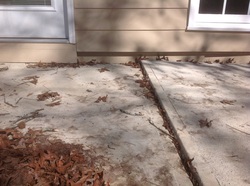 We are constantly asked why concrete slabs sink, and how to prevent them from doing it again. The answer is simple, in 99% of the cases the culprit is poor drainage at the slab. What this means is that if you can see the bottom of your concrete, you have negative drainage, and if you have negative drainage, the soil beneath you slab will be depleted leaving you with a situation that will cause voids beneath your concrete and will cause water to flow towards the foundation of your home, which will make its way into the basement and may even cause serious problems with the integrity of your foundation. Check placement of downspouts - Sometimes gutters need to be moved in order to keep water from undermining driveway or walkway slabs. Landscaping - Trees that have been removed will eventually rot down and cause a low spot in your yard, this could eventually be a place where water will collect and have no way out, creating a bigger void near pool decking, driveways and walkways. Seal cracked concrete - Each time it rains, that water is seeping down in between cracked concrete and eroding soil underneath. If enough soil is eroded out, that slab or concrete section will drop because it no longer has the support needed below. If you are in the Coastal South Carolina areas and have sinking concrete or voids beneath your interior or exterior slab give the your Polyjack Professional at Concrete Corrections a call for your Free Estimate 843-732-3201 Before you know it, daylight savings, thunderstorms and, yep you guessed it, Spring projects are here. Some folks are even thinking about getting the house ready to put on the market. Either way, your swimming pool decking may be showing signs of distress. 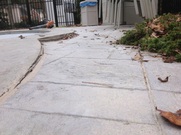 Chances are that water has gotten through the UV damaged caulking by now and winter freeze/thaw has the soil settled or eroded out of it's original place. There is also the possibility that the local moles have decided to tunnel through the area and displaced the soil, resulting in settlement. Either way, pesky trip hazards are now evident. Now you've got some questions: 1. How much will it cost to replace a section of my pool decking? Often times, in order to pour new small sections of concrete, there is a hefty minimum. 2. Will it match my existing pool deck? If the existing pool deck is a few years old, there is a very good chance that the newly poured concrete color will not match the older. 3. Will it resettle? Pouring heavy concrete, 140 lbs/cu ft, on already compromised soil could result in resettling. Good News For Sunken Pool Deck Dilemas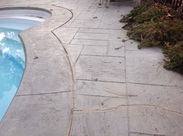 We lift your existing concrete - There will be no worry of mismatched concrete colors around your pool this Spring because we lift your existing concrete back into place, as if there was no problem with settlement in the first place. We lift and support concrete with Polyurethane Foam - Our product does not shrink, settle or erode. It's lightweight, measuring in at 4.5 lbs/cu ft, so there will be no worry about a resettlement issue. Foam is injected as a liquid and cures under your slab, so any mole holes or voids will be filled and supported. Use the repaired are immediately - Our polyurethane products cure in minutes, so you and your family will be using the lifted and supported area right away. There is no delay in pool time fun. No unsightly marks - We make sure to space our 3/4" injection holes strategically so they are not obvious. Often times we can camouflage them to where the homeowner can't even find them! No disruption to landscape - Our equipment is contained in a mobile trailer parked on the street or in your driveway area. Our heated hose, hand tools and drop cords are light and won't disturb any landscaping you may have around your yard or pool area. We're the cost-effective alternative - So many of our customers are pleasantly surprised to find out that our prices are very affordable, even competitive with the mud jacking companies. Call Today For Free Estimate Georgia 770-558-5862 South Carolina 843-732-3201 www.correctyourconcrete.com 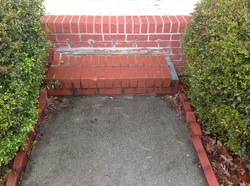 If you are ready to start the New Year off with home improvement ideas in mind, you are not alone. The New Year is an excellent time to consider making some repairs around your home before the spring. Home improvements can range from upgrading existing fixtures and finishes to knocking down walls and adding on square footage. Whichever improvements you have in mind, use these tips to guide you throughout the process if you need to hire a contractor: 1. Determine when to take action - Often times we see things around the house that need attention, but sometimes they get forgotten about until something major happens. For example, when it rains the water comes down that broken gutter, it floods out around the front porch and puddles every time. Well, the porch now has a void under it from erosion and the front step/sidewalk concrete area has just separated. The step is now inconsistent from the others, creating a major trip hazard. At this point, someone in your family has tripped a few times and maybe it's not a big deal yet, but a neighbor could fall and this sunken concrete is now a liability to you as the homeowner. 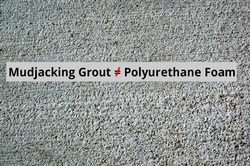 2. Compare apples to apples - If you're of the belief that you must always get 3 estimates before you hire a contractor, please make sure that you are comparing apples to apples. What I mean is this, there are a few trades out there that can do similar jobs, but their process and materials are very different. At Concrete Corrections, we lift/level and stabilize sunken concrete with polyurethane foam. There are other contractors out there that lift/level sunken concrete with a cementious material or grout. These processes are quite different and each may have their pros & cons, but they really shouldn't be compared as equals. So, if you're interested in mudjacking with grout, compare the mudjacking companies process & pricing. If you're wanting polyurethane foam, it would be wise to compare polyurethane foam companies process & pricing. 3. Know who you are hiring - They say that you can tell a lot about a person in the first few minutes. Some contractors don't ever answer their phones, some don't call back and some don't even show up after they've been hired. It is important that you get a feel for who you are hiring, even though it may seem like a small job. There are things you can do or questions to ask: take a look at their references, do they have a website, have you met them in person, get a professional estimate, what other projects have they done, etc.  3. Setting Expectations - It's so important for the customer and the contractor to be on the same page. Getting a professional estimate should spell out all the steps in any repair you're having done, but if it doesn't, ASK QUESTIONS. Here is an example, a customer has a cracked and sunken driveway that they want repaired and looking better. The contractor should have in their estimate that they will raise the sunken areas to level and repair/seal cracks, but the cracks in the driveway will still be visible. We don't want the customer thinking that they will come home to a brand new driveway and all cracks will disappear. Perhaps the driveway will then get a coating over the top to make it look brand new and the cracks will essentially "disappear", but make sure it's clear of what the job will entail and what is expected. Hiring a contractor to help out with home improvements doesn't have to be a "nightmare experience" that some people talk about. It's really a two way street and important for both parties to educate themselves on what they are getting into. Don't forget, if your contractor did a great job, let them know or give them a good review somewhere. It really does help! |
Archives
November 2017
Categories
All
|
|
Copyright © 2024 l Concrete Corrections by ISS, Inc
|
Who We Are
We are a family owned and operated company based in coastal South Carolina and dedicated to providing a cost effective repair to compromised or settled concrete slabs and soil areas around the home or business, with access to a vast array of knowledge and polyurethane products. We promise to produce long lasting results that we are all proud of.
|
Contact Us
|
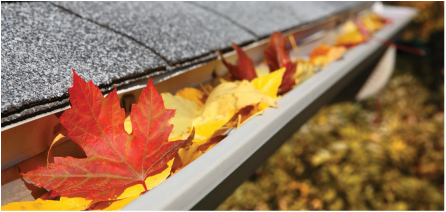
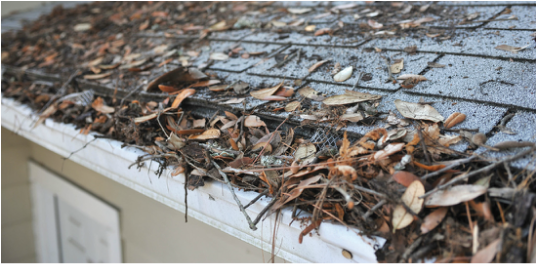
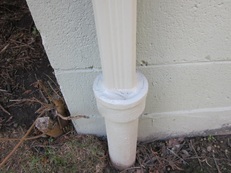
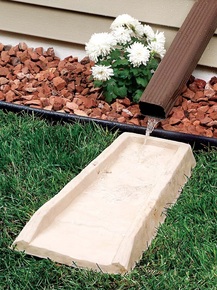
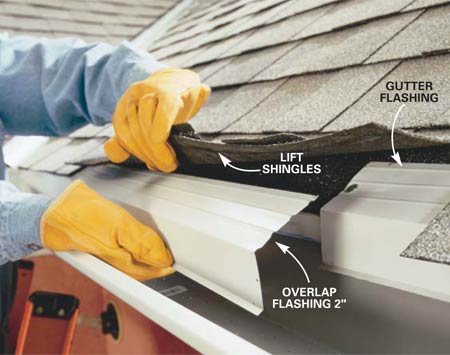
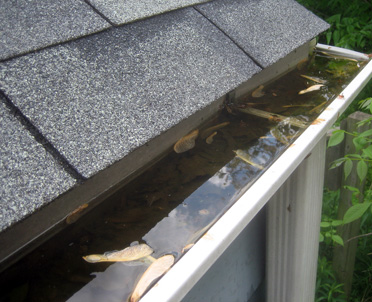

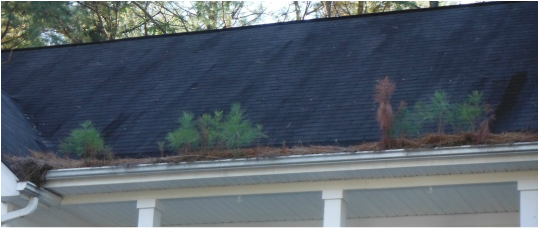
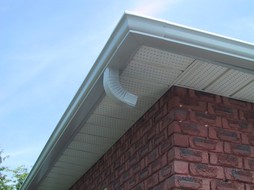
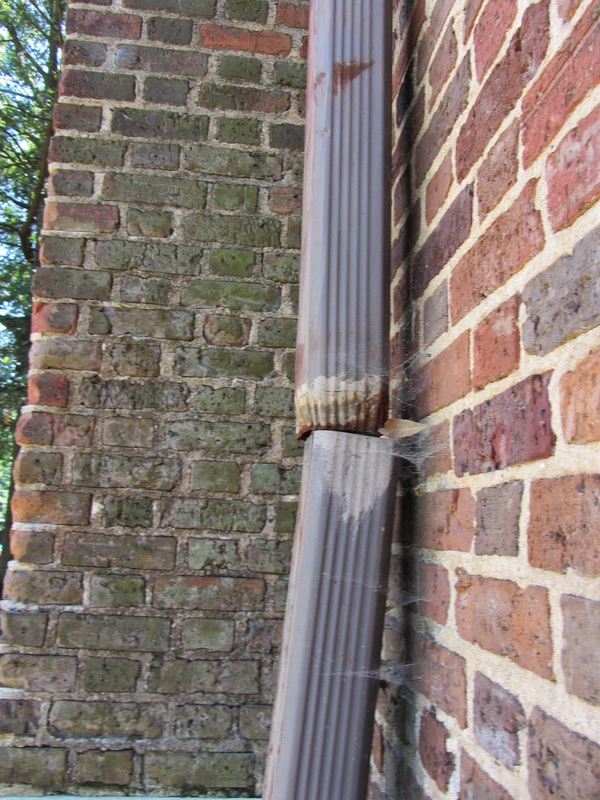
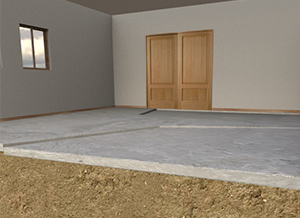
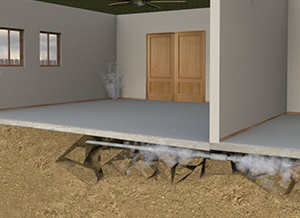
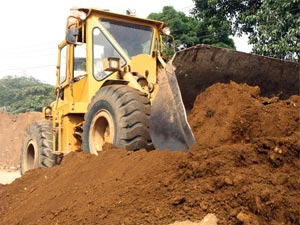
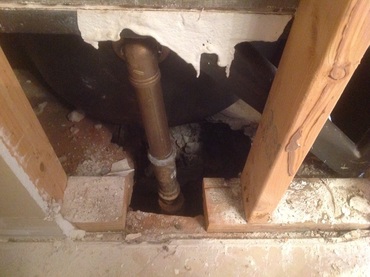
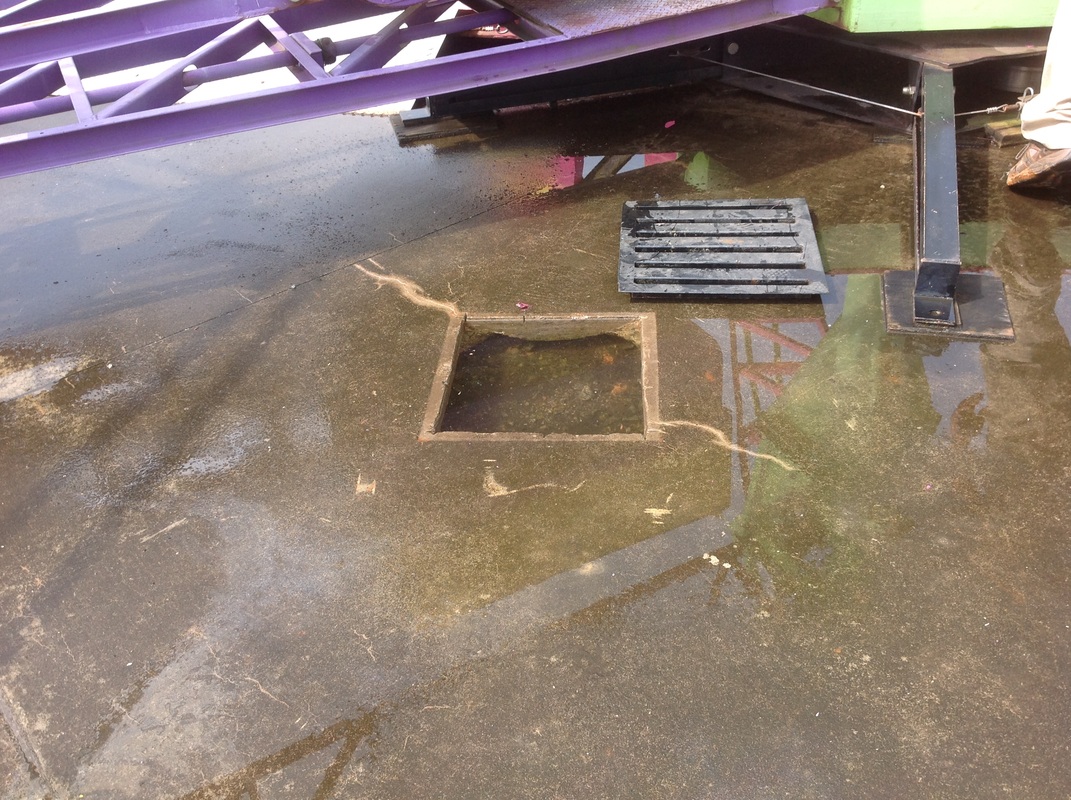




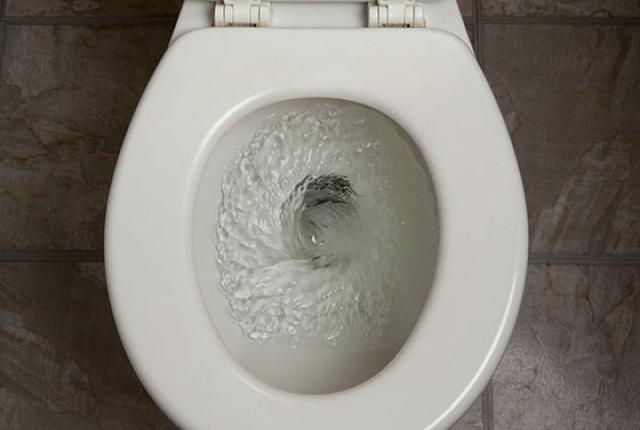


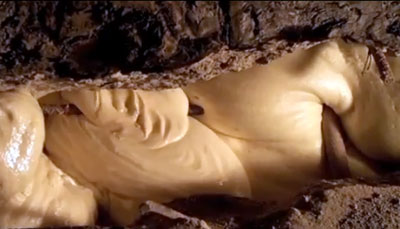


 RSS Feed
RSS Feed
